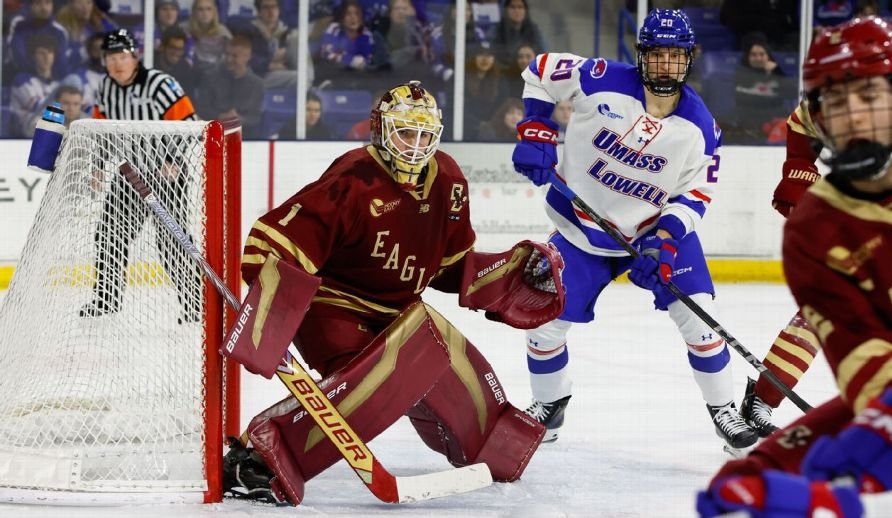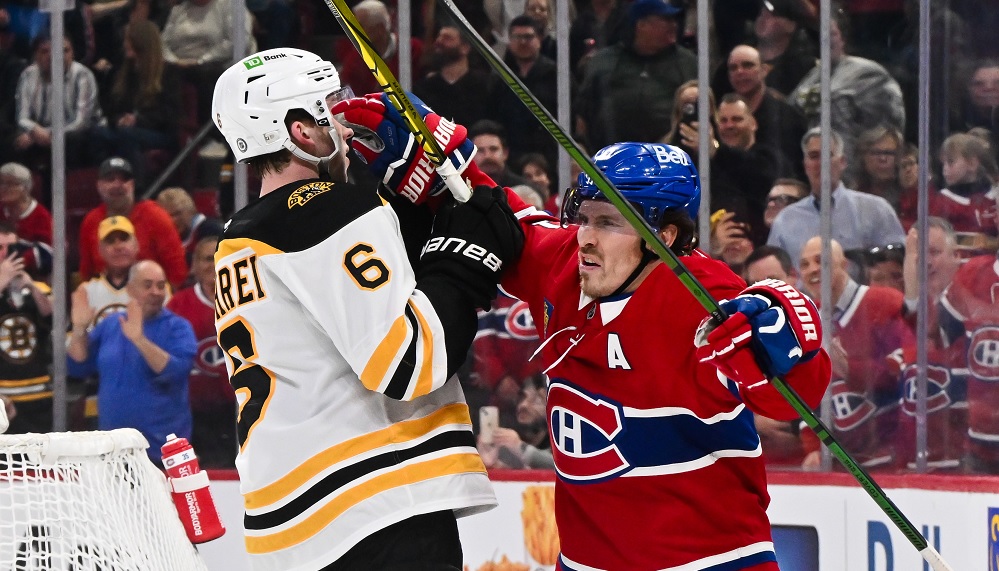HabsWorld.net --
Marc Bergevin’s decision to sign P.K. Subban to a bridge deal back in January
of 2013 was met with a lot of criticism. It certainly saved them money in
the short-term but how much would it cost them in the long run? Now that
Subban has inked a new eight year deal with the team, we can now attempt to
determine just how much going that route back then cost the Habs.
To do that, we have to compare his actual deals with some ‘What if’
contracts, ones that would have been signed back in January of 2013 and whenever
that one expired. We all know what the actual contracts are/were.
Two years ago, it was a two year, $5.75 M deal for a cap hit of $2.875 M.
Now, he’ll be playing on an eight year, $72 M pact for a cap hit of $9 M.
Figuring out the non-bridge deal that could have been two years ago is a little
more challenging.
There were a variety of reports at the time that had Subban asking anywhere
from 4-6 years and anywhere from $4 to $6 M per season. There’s no way to
prove what’s right and wrong so let’s meet in the middle here and suggest an
approximate deal of five years, and $25 M (a cap hit of $5 M). That’s the
easy one to figure out.
That five year deal takes us to the end of the 2016-17 season where Subban
would have been unrestricted. It’s likely that he would have been seeking
a max-term contract. Had he re-signed before July 1 with the Habs, that
would have meant eight years. Had he tested the market, the max would have
been seven. For the sake of this exercise, let’s assume he tests the
market which means a seven year pact. How much would that be worth?
This offseason, the salary cap jumped roughly 7.3%. If that were to
continue for each year leading into the 2017 offseason, the salary cap would
jump up to $74.04 M in 2015-16, $79.4 M in 2016-17, and $85.2 million in the
2017 offseason, a cool $16 million more than it stands today. It also must
be considered that there are no RFA years to lower the cap hit as there are in
Subban’s recently-signed deal.
Presently, top players are getting somewhere between 11-13% of the salary
cap. (Subban falls in right at that 13% mark.) That percentage is
expected to increase as big money deals become more and more prevalent in years
to come as a result of the expected increase in the upper limit; it’s not crazy
to think that some of the top pending free agents will get closer to 15%.
So between the current and expected rates, we have a range of 11-15%.
Again, let’s meet in the middle and go with 13%. 13% of $85.2 million
works out to just over $11 million, which happens to coincide with the highest
salary in Subban’s contract and what some are forecasting the top UFA salaries
to be in a few years.
So with that all in mind, let’s assume his hypothetical UFA contract in the
2017 offseason to be seven years, $77 million (for an AAV of $11 million).
Now that we have both sets of contracts (Actual and ‘What if’), we can compare
and find out which route was more beneficial.
| Season | Actual | ‘What if’ | Difference |
| 2012-13 | $2,875,000 | $5,000,000 | -$2,125,000 |
| 2013-14 | $2,875,000 | $5,000,000 | -$2,125,000 |
| 2014-15 | $9,000,000 | $5,000,000 | $4,000,000 |
| 2015-16 | $9,000,000 | $5,000,000 | $4,000,000 |
| 2016-17 | $9,000,000 | $5,000,000 | $4,000,000 |
| 2017-18 | $9,000,000 | $11,000,000 | -$2,000,000 |
| 2018-19 | $9,000,000 | $11,000,000 | -$2,000,000 |
| 2019-20 | $9,000,000 | $11,000,000 | -$2,000,000 |
| 2020-21 | $9,000,000 | $11,000,000 | -$2,000,000 |
| 2021-22 | $9,000,000 | $11,000,000 | -$2,000,000 |
| Total | $77,750,000 | $80,000,000 | -$2,250,000 |
At the end of the day, it looks as if the Habs may very well have saved a bit
of money along the way. Now to be fair, saving money only means something
if you make the right moves with it and it’s fair to suggest that they didn’t
make the most of their savings the last couple of years. The next three
seasons is where they’re really going to pay for the bridge deal as it’s going
to cost them roughly $4 million per year. After that though, they start to
save some money again. We can only hope that those savings are put to
better use in future years.
Let’s throw one more point to ponder out there, just in case you haven’t had
enough of the hypotheticals already. In the summer of 2022, Subban will be
33 years old. What type of money could he be seeking then? It’s far
too early to speculate as that contract will be signed under a new CBA so
instead I’ll simply ask, can he get more than $11 million? Given the fact
he’ll likely be seeking a medium-to-long term deal (where the money will be
lower in the back years), he may have a hard time reaching that. If so,
there may very well still be some future savings by going the route they did.
Giving P.K. Subban a bridge deal coming out of the lockout was met with a lot
of criticism and many thought it would come back to haunt the team later.
Even if you tweak the ‘What if’ numbers a bit, it’s not going to skew the end
result to the point where going with the two year deal coming off his
entry-level contract would have been considered extremely costly in the long
run. At the end of the day, it doesn’t appear as if giving Subban the
bridge deal cost them much of anything at all.
(Note: There are some who would have wanted the Habs to sign him to a
long-term deal before the lockout where there were no limits on term.
Given that there weren’t reports at the time that Subban was seeking such a deal
plus the difficulty in hypothesizing a salary on that contract, that option
wasn’t considered for the purpose of this exercise.)

